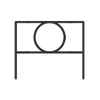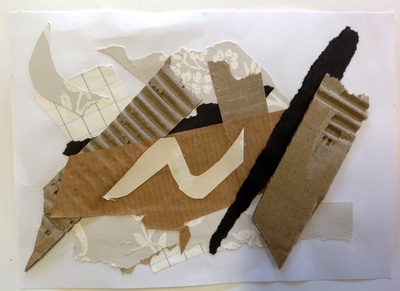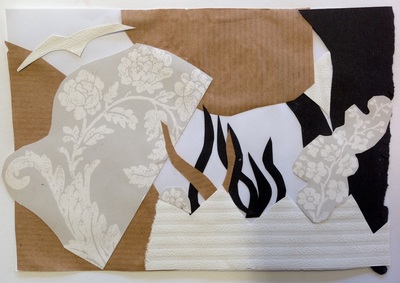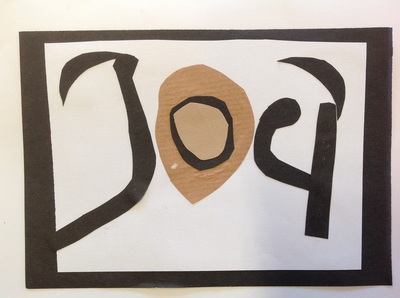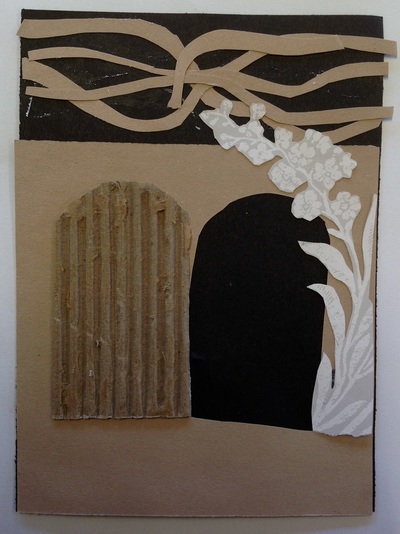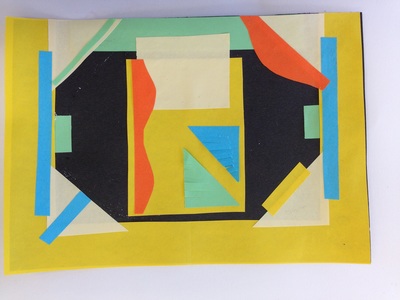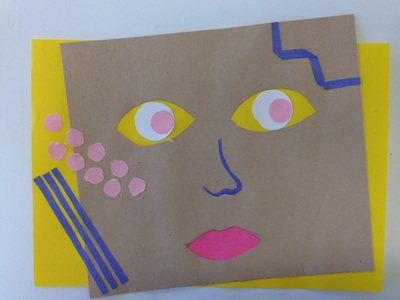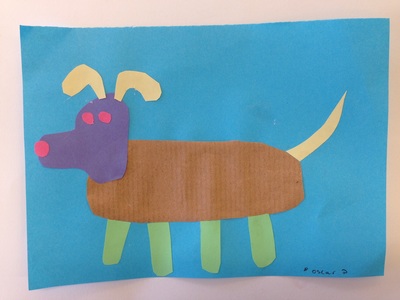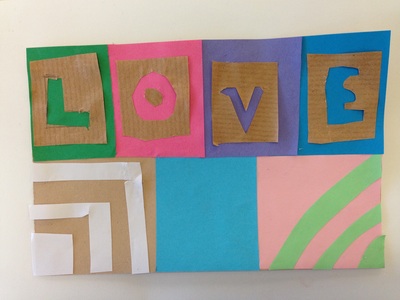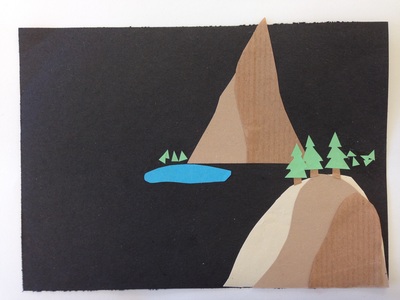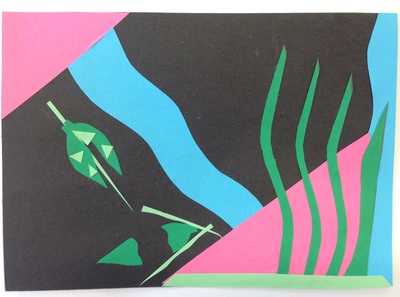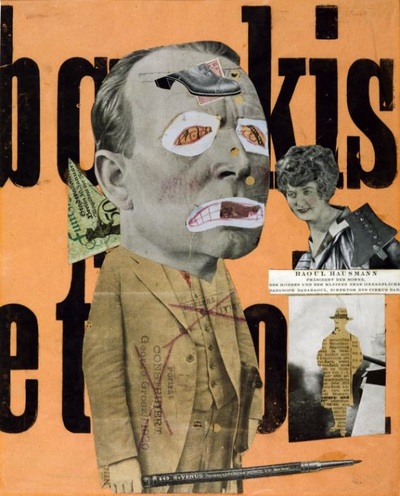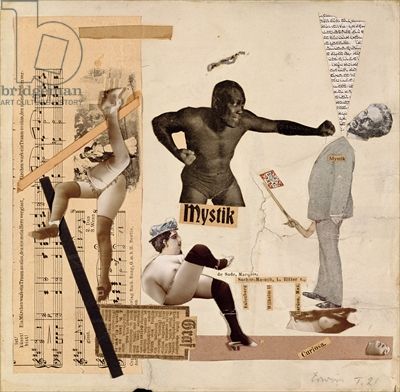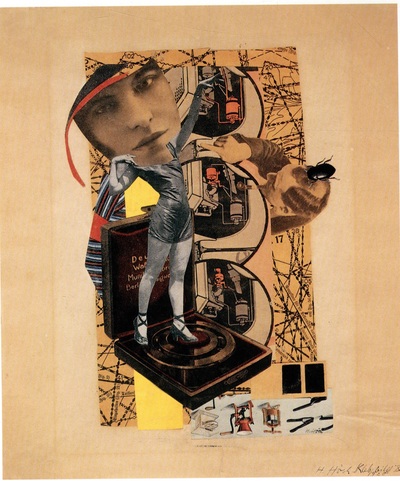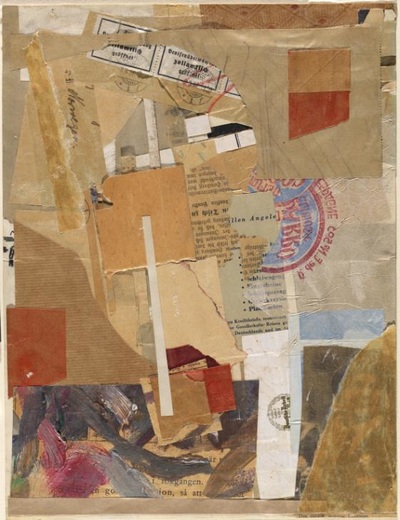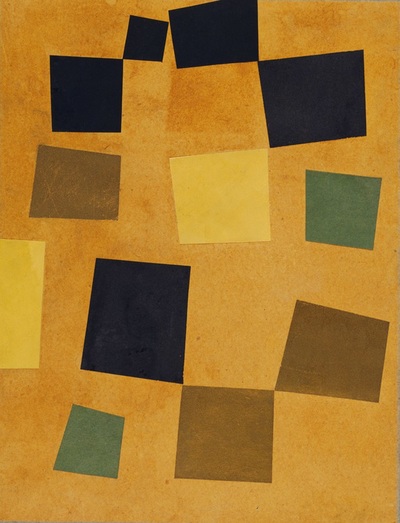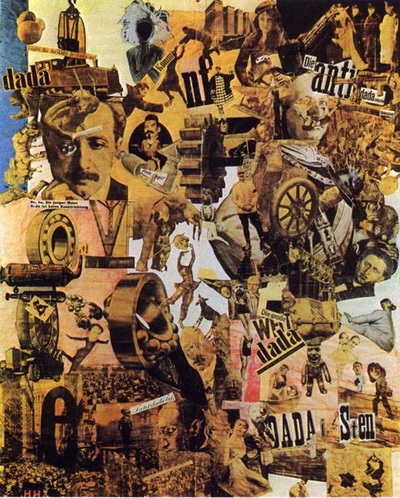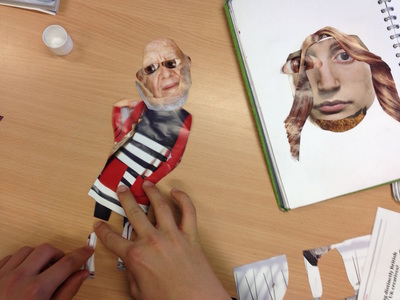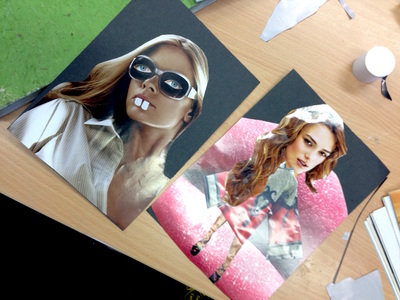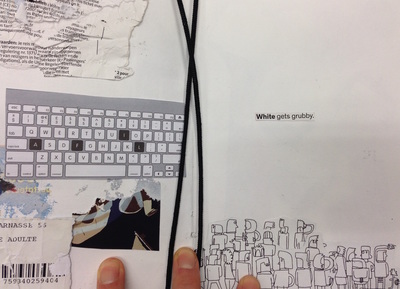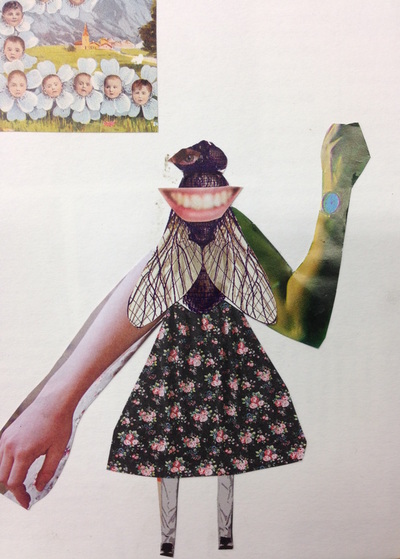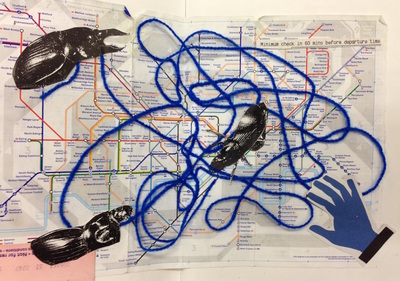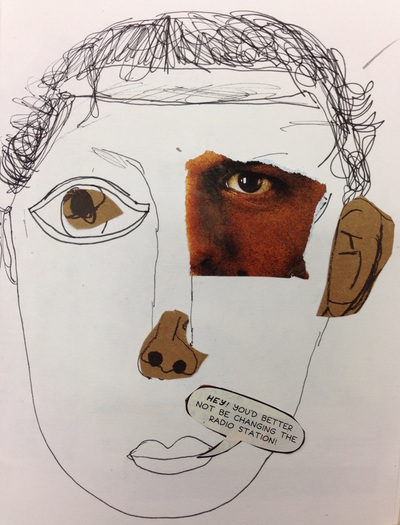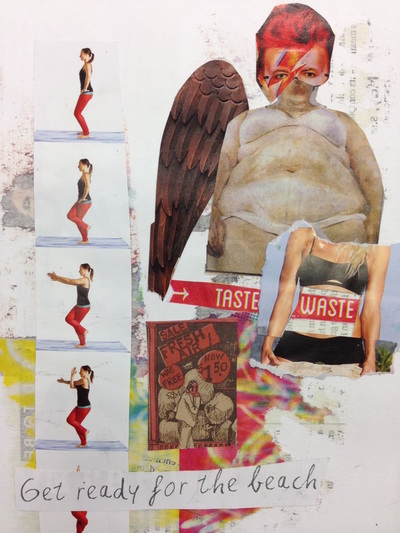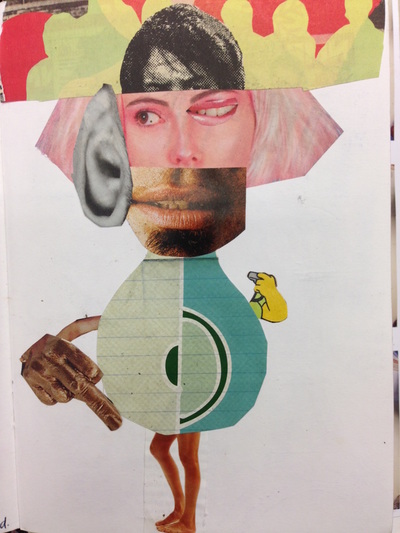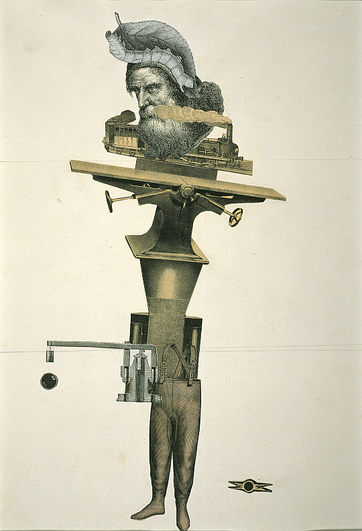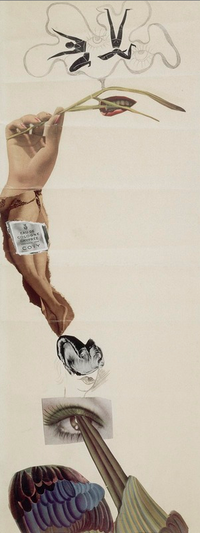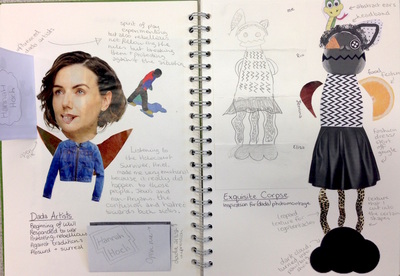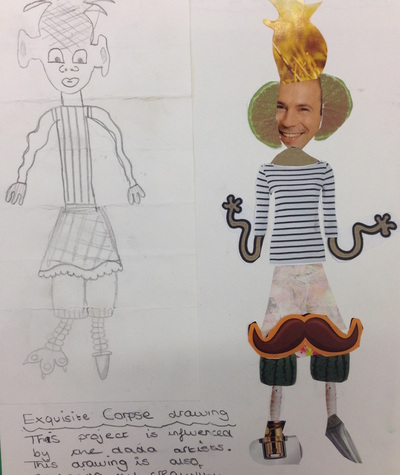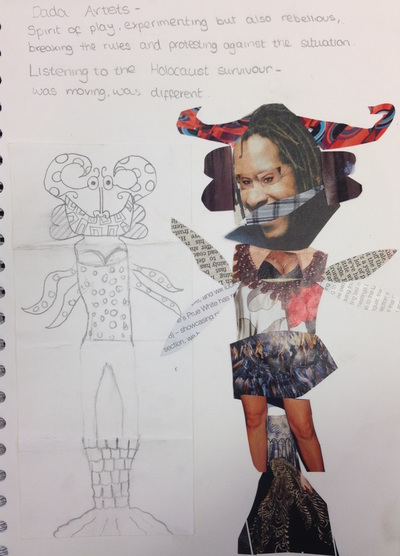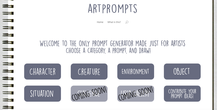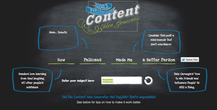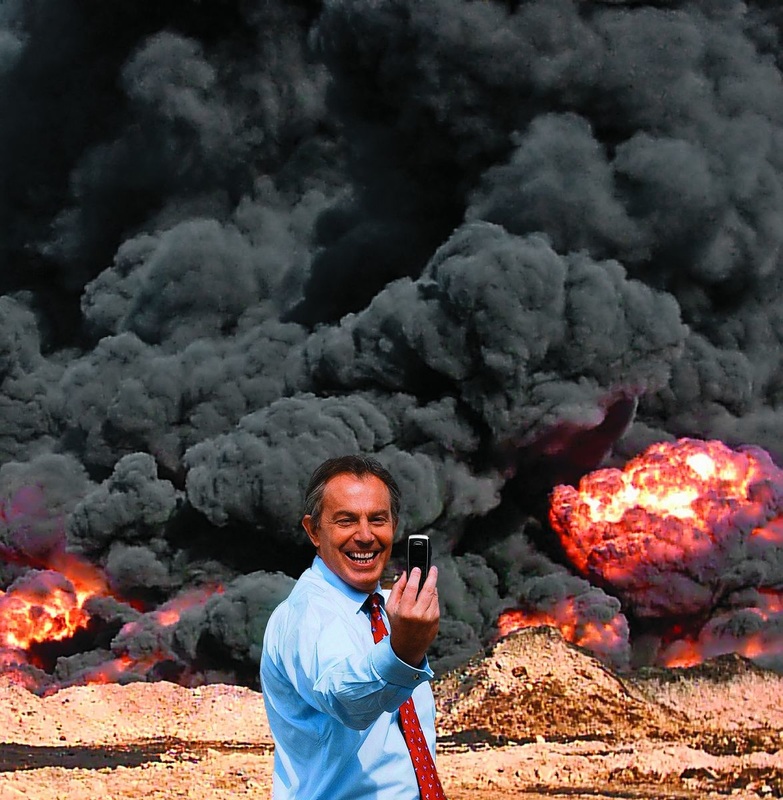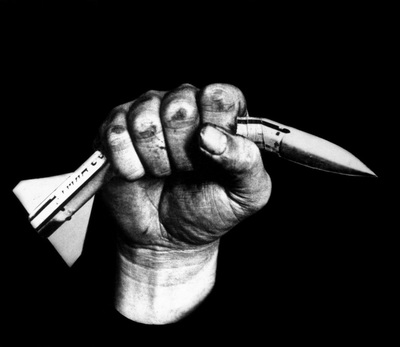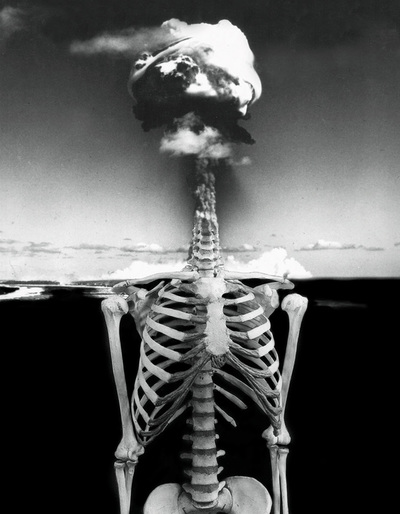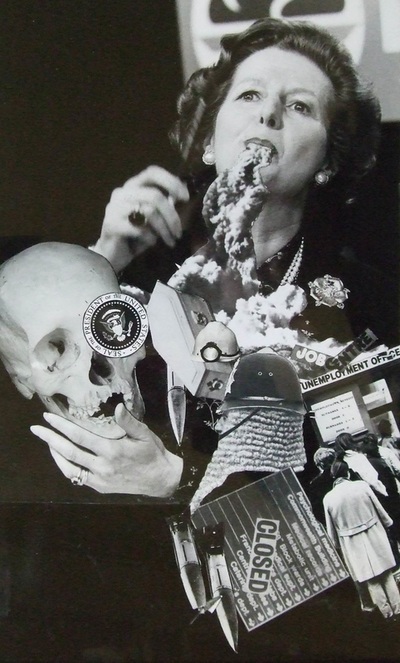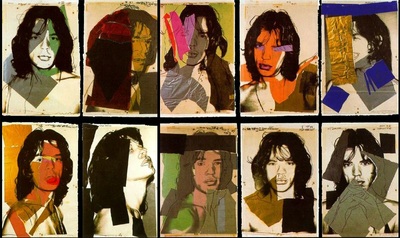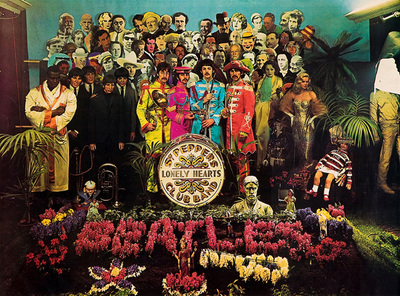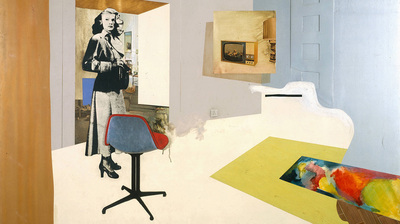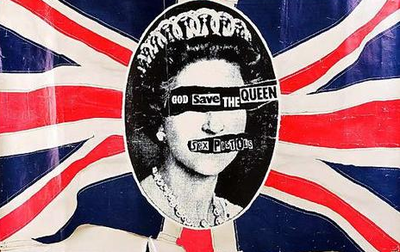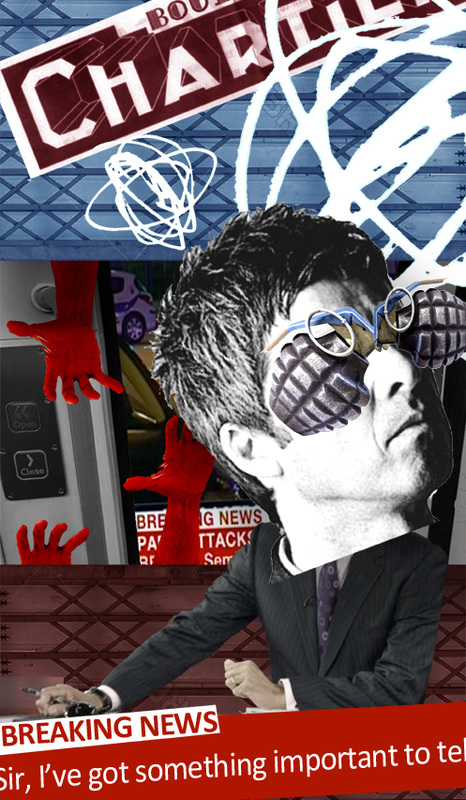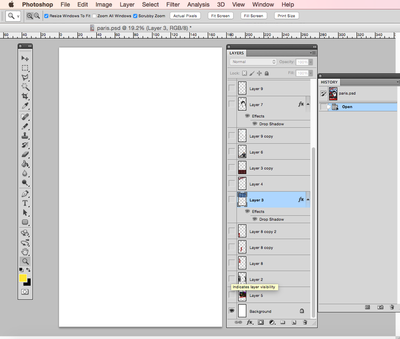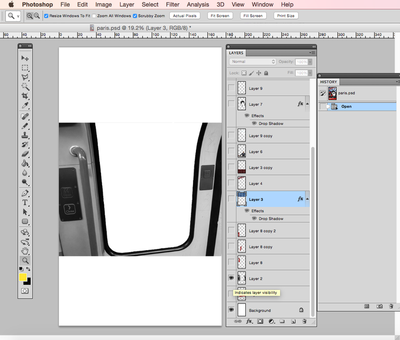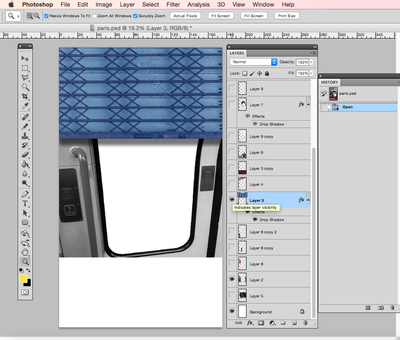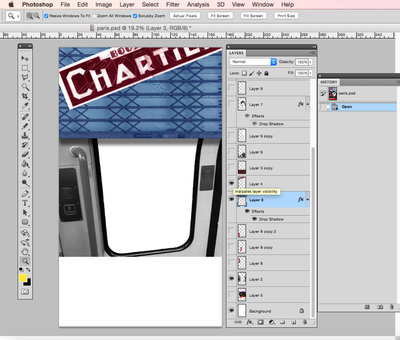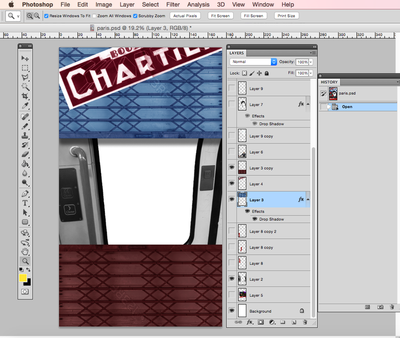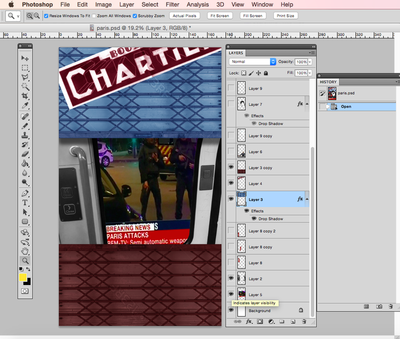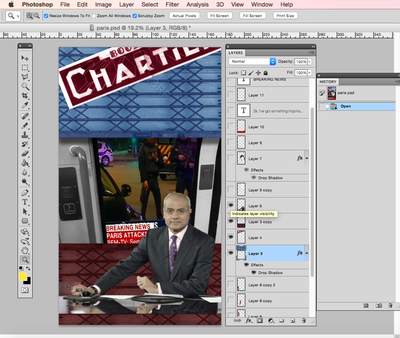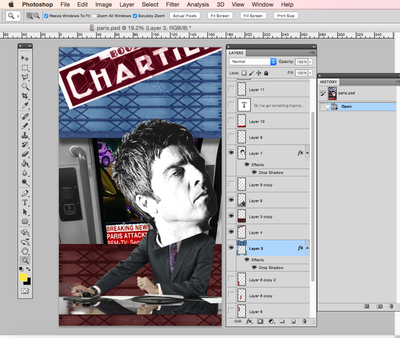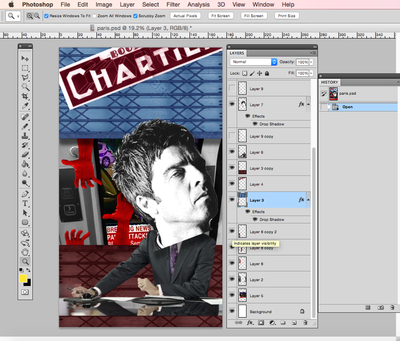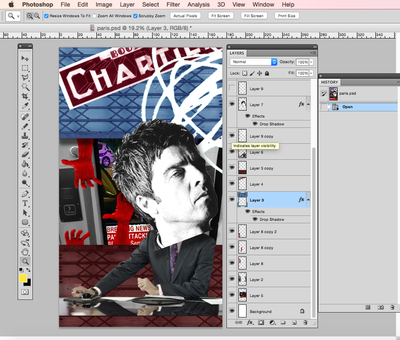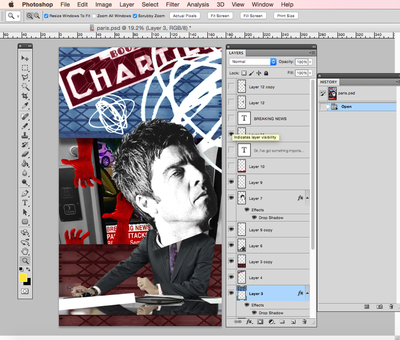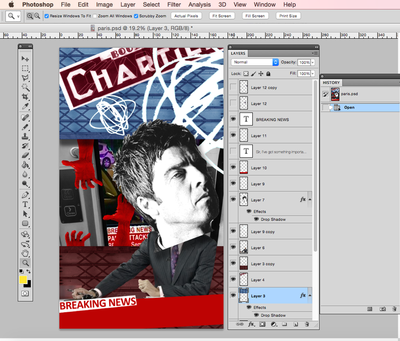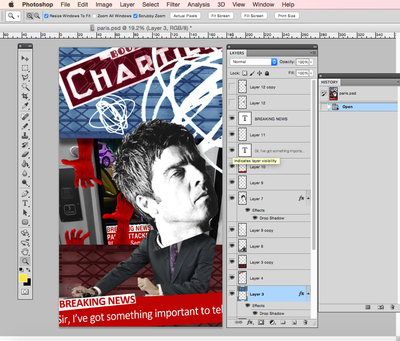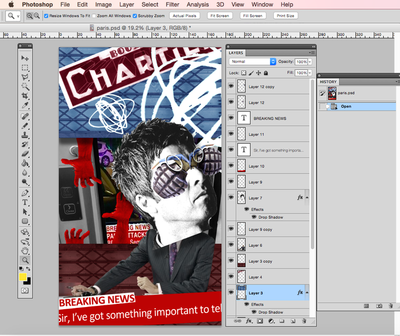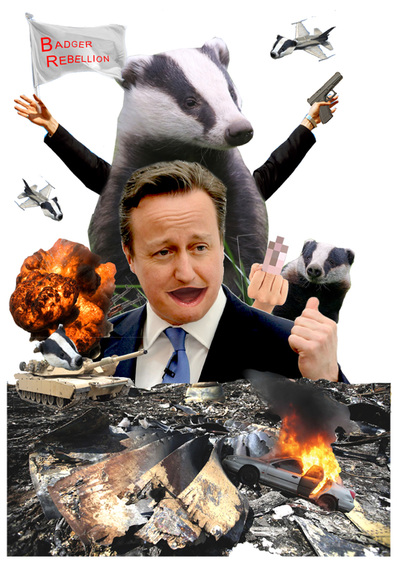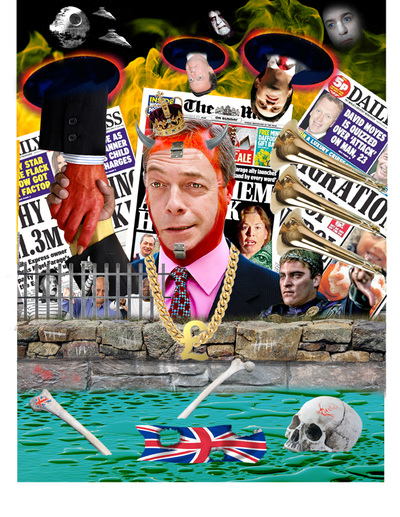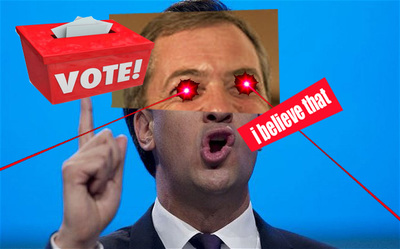KS3/4 Lesson Plan:
An introduction to experimenting with Collage and Photomontage
for Year 9/10students
From Chris Francis www.devnicely.co.uk
This sequence of 4 lessons is designed with a Year 9 Art group in mind, however, it might also serve as an introduction for a GCSE Photography group. It is intended to provoke some deeper thinking about how we compose artworks - visually and tactilely - and how incorporating photography might influence, inspire and distort this process.
Put more simply: experimenting with collage and the visual elements, arranging colours, shapes, textures and so on. And then throwing photography into the mix, to see how it can conjure up alternative readings and new possibilities.
Put more simply: experimenting with collage and the visual elements, arranging colours, shapes, textures and so on. And then throwing photography into the mix, to see how it can conjure up alternative readings and new possibilities.
Lesson 1: Cut to the playBefore tapping into some Dada spirit and exploring new artists, techniques and ideas, it's useful to get a measure of students' initial understanding of collage.
TASK 1: COLLAGE
Using only a variety of coloured papers (and avoiding photographs at this stage): Produce a collage. Ha! That's it. No further instruction - no rules, only tools (in this case, hands, scissors, glue and aforementioned papers) - 30 minutes should do, working A5 size. Collage - a work of art in which paper and other materials are cut or torn and then arranged and glued to a supporting surface. |
Given limited input or guidance how do year 9 students respond to a collage task? What decisions do students independently make? What existing knowledge are they likely to draw upon? The collages above and to the left were produced by Year 9 students as a 30 minute practical task, with one group being given a more restricted colour palette. I was curious to see how they would approach the task when just presented with the materials and no further input or guidance.
|
A few prompts...
|
...a few more...
|
...and a few more.
|
|
Once this short task is completed, students can explain their decisions and try to categorise their responses. The following headings might be useful (but not definitive):
|
Prior to further input, students might then consider what influenced the decisions that they made. For example:
How did the colours, textures or patterns of the materials provided influence the decisions made? Did a certain texture or colour remind them of something which then led to an idea / theme for their response? Did they begin with a fixed idea of what they wanted to produce, or did this evolve through stages of making / experimenting? |
Is producing a collage more liberating - fun even - than trying to produce an accurate pencil drawing? If so, why?
What might be:
|
EXTENSION TASK Produce an A5 collage choosing the materials and imagery that you wish to use (rather than the teacher doing this). This might include photographs, text, different textures and surfaces or even your own drawings / mark-making.
Lesson 2: Artists, mixing it up
Dada was an art movement formed during the First World War in Zurich in negative reaction to the horrors of the war. The art produced by dada artists is often satirical and absurd. |
Dada Artists
Frustrated by what was happening in the world at the start of the 20th Century, Dada artists turned to new forms of art-making. As a form of protest they began to use imagery from newspapers, magazines and posters - cutting up, manipulating and making nonsense of mass media imagery of that time. Some of the key Dada artists that experimented with collage and photomontage include Raoul Hausmann, Hannah Hoch, Hans Arp and Kurt Schwitters. These artists embraced chance, accident and risk, rebelling against traditional art making such as carefully crafted paintings, drawings and sculptures.
|
|
TASK 2: Photomontage Using a range of magazines and newspapers as a starting point (tabloids, broadsheets, supplements, specialist periodicals etc.), consider the various roles of photography:
|
"I remember the pure pleasure of photomontage. I had spent three years working with a pencil, paint and pen trying to translate lived experience into marks. It was a moment of glorious liberation..." Linder Photomontage - a collage work that includes cut or torn-and-pasted photographs or photographic reproductions.
|
Produce a photomontage inspired by the Dada artists. To do this you might consider one (or more) of the following:
- aim to express an opinion about something (the state of the world, your favourite cheese)
- respond to a particular article, headline or quote in a playful or thought-provoking way
- devise a method of randomly selecting images to use, such as throwing a dice for page numbers or picking images out of a hat (receptacle of choice for such matters)
- aim to contrast images from different photography genres, for example mixing fashion advertising with powerful news images.
Sketchbook experiments by Julia Hanlon, Year 12 Photography student
EXTENSION TASK Write down the top 5, most prominent news stories for the day. Use a news website such as BBC NEWS or The Guardian, or alternatively make notes from TV news headlines. How informed or aware are you of each of these events / happenings? Choose one news item to follow in more depth. Try to find inspiration or starting points for future work.
Lesson 3: Funny, that
Producing a photomontage is a fun and playful process. The Dada artists recognised and embraced this, whilst also setting out to undermine traditional art making practices. Their surreal and illogical experiments also reflected their confusion and frustration with the world at war.
|
EXQUISITE CORPSE Influenced by Dada, Surrealist artists developed games of chance such as 'The Exquisite Corpse' to also incorporate collage and photomontage. This is similar to an old parlour game called Consequences in which players write in turn on a sheet of paper, fold to conceal, and then pass to the next player for a further contribution. More information and examples of this can be found in this great Photopedagogy lesson by Jon Nicholls, Serious Play. “Perfect nonsense goes on in the world. Sometimes there is no plausibility at all” Nikolai Gogol |
|
A quick game of Exquisite Corpse can be a fun and interesting way of developing inspiration for collage experiments. The examples on the right were produced by Year 9 students in a 50 minute lesson with explanations added after. The drawings were passed around to be generated by 4 different students before being developed into individual collage responses.
|
Photomontaging has the potential to create peculiar characters and absurd scenes through playful juxtapositions and combinations. This surrealist humour has become a popular part of our culture, often evident in film and television shows. Here are a few examples:
|
|
|
TASK 3: Considered Nonsense
|
The clips and montages above might seem illogical, however they are likely to be the product of careful creative development, not least experimenting, selecting, evaluating, and refining. Design and compositional decisions need to be made to ensure the work (and idea) has maximum impact. With this in mind:
Develop a second photomontage - one that has the potential to really baffle and/or amuse the viewer. Aim for increased subtlety in your decision making. Consider the impact of the following:
Struggling for an absurd idea? Many artists, including surrealists Marcel Duchamp and Jean (Hans) Arp - or more recently contemporary artist Keith Tyson with his Art-Machine - have experimented with alternative ways of generating ideas for work. There are plenty of online tools to help you generate random words, sentences or paragraphs that might provide alternative inspiration for your photomontage. Click on the images below for two versions of these: |
Photomontage is not limited to traditional cutting and pasting techniques. Image manipulation software such as Photoshop is designed to work in layers enabling artists to replicate - and work far beyond - traditional techniques.Contemporary artist and political activist Peter Kennard is known for his powerful use of both mediums. Collage and photomontage have been regularly adopted for both playful and rebelious means - from Pop Artists such as Andy Warhol, Richard Hamilton and Peter Blake, to the punk album artworks of Jamie Reid. Below are a few examples:
|
EXTENSION TASK - Research a range of examples of collage and photomontage work from the different artists and designers mentioned so far. These include Hannah Hoch, Raoul Hausman, Jean Arp, Kurt Schwitters, Man Ray, Richard Hamilton and Peter Blake. Choose one or two artists for a more focused study. Collect images (or produce thumbnail sketches) of at least 3 examples of their collage work. Try to find out what their own motivations and inspirations were.
Lesson 4: Photomontage using Photoshop
|
Adobe Photoshop is the industry standard image manipulation and editing software. There are many cheaper (or even free) alternatives including Photoshop Elements (reduced functionality version), GIMP and Pixelmator.
Photoshop is an amazing tool for producing photomotage work, but it is still only a tool. The quality of result - as with cutting and glueing - will be decided by thoughtful composing and interesting ideas. The image to the left is a photomontage created using Photoshop in response to our ill-fated trip to Paris. It is full of references that only those on the trip might (or might not) recall and appreciate. By clicking on the gallery images above you can get a stage by stage idea of the amount of layers involved in its creation. The images were mostly taken off the internet and then tweaked in a variety of ways - colour adjustments; selections made and cropped out; adjusting of scale, and so on. Text layers were also added in the final stages and also, to add a little more energy and movement, a scanned scribble.
|
Learning Photoshop can be quite daunting but it doesn't take long to get to grips with the basics. A suitable introduction might include:
- Image size, resolution, creating pages
- Opening,importing, placing images
- Using layers
- Basic selection tools
- Basic light / colour adjustments
- Scaling, cropping, distorting
- Saving, compressing, various file formats
Photomontages produced using Photoshop by Year 10 students in response to the 2015 General Election:
EXTENSION TASK - Experiment with how adding / altering text can change the impact of an image. Explore a variety of combinations on the same image: powerful statements, surreal one liners, choosing words at random. Save different versions to compare and contrast. You might also consider how the font style, size, colour etc. influences the concept and the composition.
